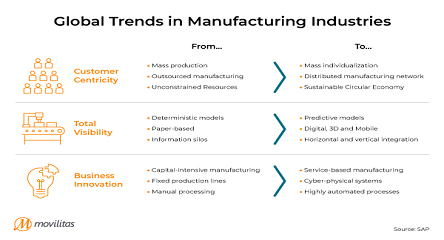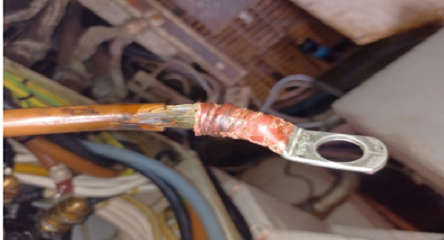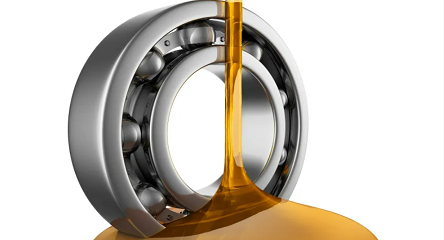Any business that develops or distributes products or services depends on having a strategic plan in place to manage the maintenance of facilities and equipment. In the strategic maintenance plan, there are many aspects that need to be considered; along with the costs involved to maintain their machinery or equipment have a direct impact on a manufacturer’s bottom line. Many businesses and maintenance managers struggle to select the best maintenance strategy for their organization. The overall objective is to have the best strategic maintenance management plan in place that minimizes costs by providing for the least amount of production disruption while extending the life of your assets and ensuring on site safety.
Most maintenance plans consist of a combination of maintenance strategies. Finding the appropriate balance of the different maintenance approaches and ensuring the plan is followed is the key to minimizing the maintenance of assets and controlling costs. When thinking about creating your maintenance strategy, there are several different maintenance strategies that are available today. For very small organizations with minimal work orders, doing work orders by paper and pencil may suffice, but for most organizations a more robust maintenance plan with a web-based Computerized Maintenance Management System (CMMS) to manage it would prove to be more efficient and cost-effective.
When developing your maintenance strategy, several types of maintenance types to consider are:
Preventive Maintenance
Preventive maintenance is regularly scheduled inspections and maintenance done to help minimize the possibility of unexpected failures of equipment and reduce repair costs.
Advantages of Preventive Maintenance
· Less risk of machines breaking down.
· Control expenses due to better management of parts inventory.
· Extend asset life span due to proper maintenance.
· Equipment running at peak performance due to proper maintenance.
· Less disruption to production, work environments, etc.
Disadvantages of Preventive Maintenance
· Upfront costs for keeping equipment regularly maintained.
· Dedicating labor to maintain equipment.
· Potential of providing too much or too little maintenance.
Reactive Maintenance
Reactive maintenance, also known as the run-to-failure strategy, is performed when assets are deliberately operated until they break down.
Advantages of Reactive Maintenance
· No planning and scheduling for maintenance.
· Strategy easy to implement.
· No initial costs.
Disadvantages of Reactive Maintenance
· Unexpected breakdowns.
· Reduced asset life span.
· Higher maintenance and inventory costs.
· Production delays.
· Inefficient use of time and labor.
· Safety issues with equipment not being maintained.
Predictive Maintenance
Predictive maintenance is a condition-based approach to maintenance that provides warnings to maintenance managers when an equipment failure might occur. Some examples of equipment monitoring methods include: Vibration Analysis; Infrared Thermography; Acoustic Analysis and Analysis of the Oil.
Advantages of Predictive Maintenance
· Cost savings on parts and labor.
· More accurate performance information.
· Improves safety.
Disadvantages of Predictive Maintenance
· Increased investment in technology based equipment.
· Increased investment in skilled labor.
· Not cost-effective for all assets.
Reliability Centered Maintenance (RCM)
Reliability centered maintenance is a method of analyzing breakdowns to identify which maintenance methods will work best for each piece of machinery. This is a highly extensive and complex process that analyzes and prioritizes all the possible failure modes for each piece of equipment, and creates a customized maintenance strategy for each individual machine.
Advantages of Reliability Centered Maintenance
· Efficient maintenance program.
· Lowers costs of maintaining equipment and resources by eliminating unnecessary maintenance.
· Focuses on critical activities and components.
Disadvantages of Reliability Centered Maintenance
· Very complex and costly.
· Significantly higher costs for equipment.
· Significant higher labor costs.
· Savings potential is minimal.
Computerized Maintenance Management System (CMMS) and Effective Maintenance Management Strategy
The effective use of a CMMS is an integral tool for achieving success in any maintenance strategic master plan. A CMMS provides many measurable benefits and savings to organizations. A CMMS stores information in a centralized system that helps maintenance teams manage their facilities, assets, inventory, analyze data, prepare for audits, control expenses, and more. A CMMS provides you with the tools to help manage and keep your equipment up and running, minimizing downtime, maximizing production time and reducing costs. A CMMS gives users the ability to:
· Manage their preventive maintenance schedules to minimize downtime.
· Optimize equipment maintenance and keep equipment running at peak performance.
· Manage assets to extend life span.
· Create on-demand reports and dashboards to analyze trends and the health of your operation.
· Have better control over inventory and expenses.
· Manage labor and contract time and materials.
Having a better insight into an organization’s maintenance operations, being able to manage and control costs, gives upper management the ability to make sound business decisions.
Summary
There are many things to consider when developing a maintenance management strategy for your specific organization. The first step is analyzing your needs. Having a CMMS is a valuable tool to help managers effectively develop, analyze and execute your maintenance management strategy. eWorkOrders CMMS helps drive down the cost of maintenance, increases asset life span, improves productivity and minimizes downtime. eWorkOrders is not just for managing your maintenance activities but has many features to manage facilities of any size, across all industries. Our team works with customers to identify the best strategy for your organization.





